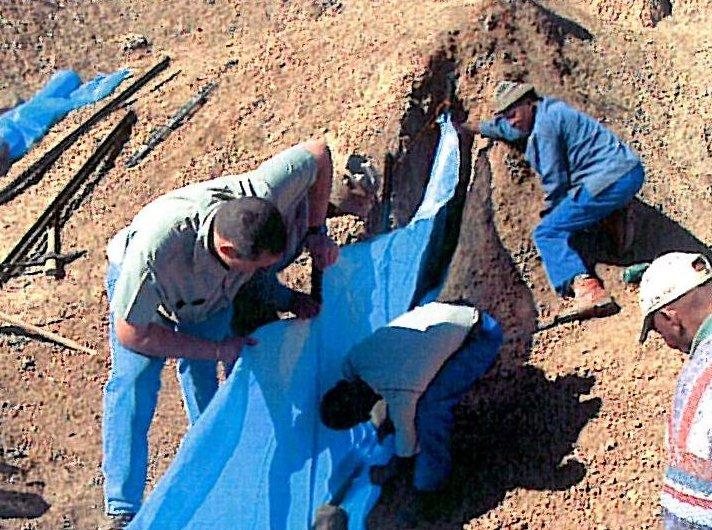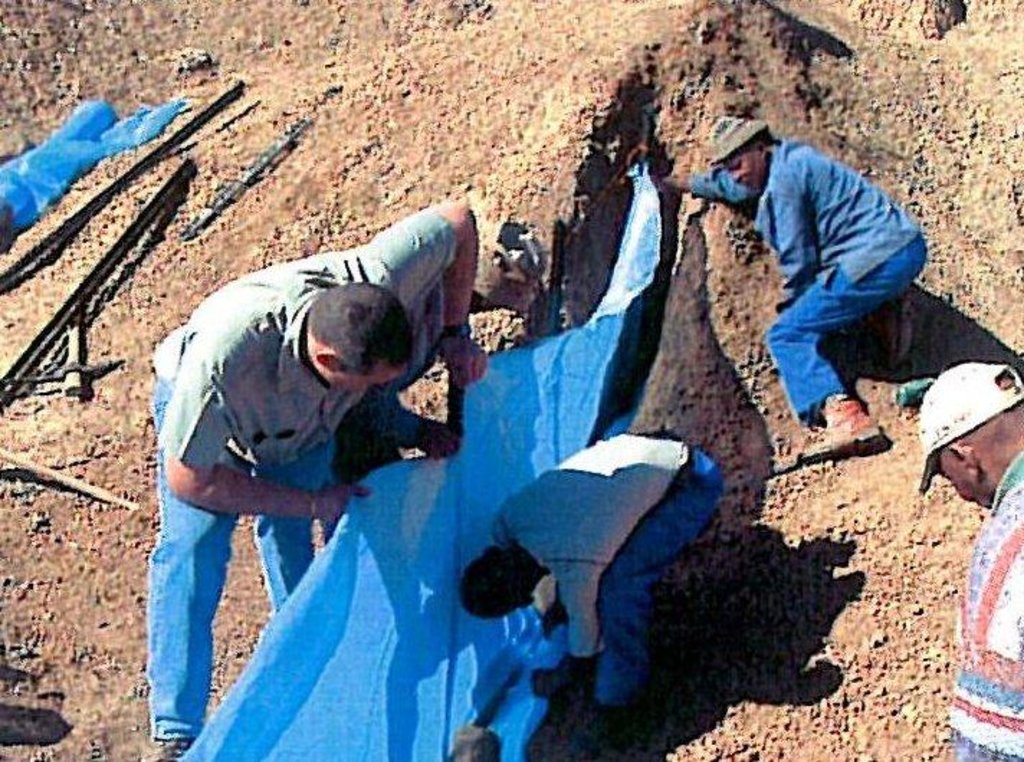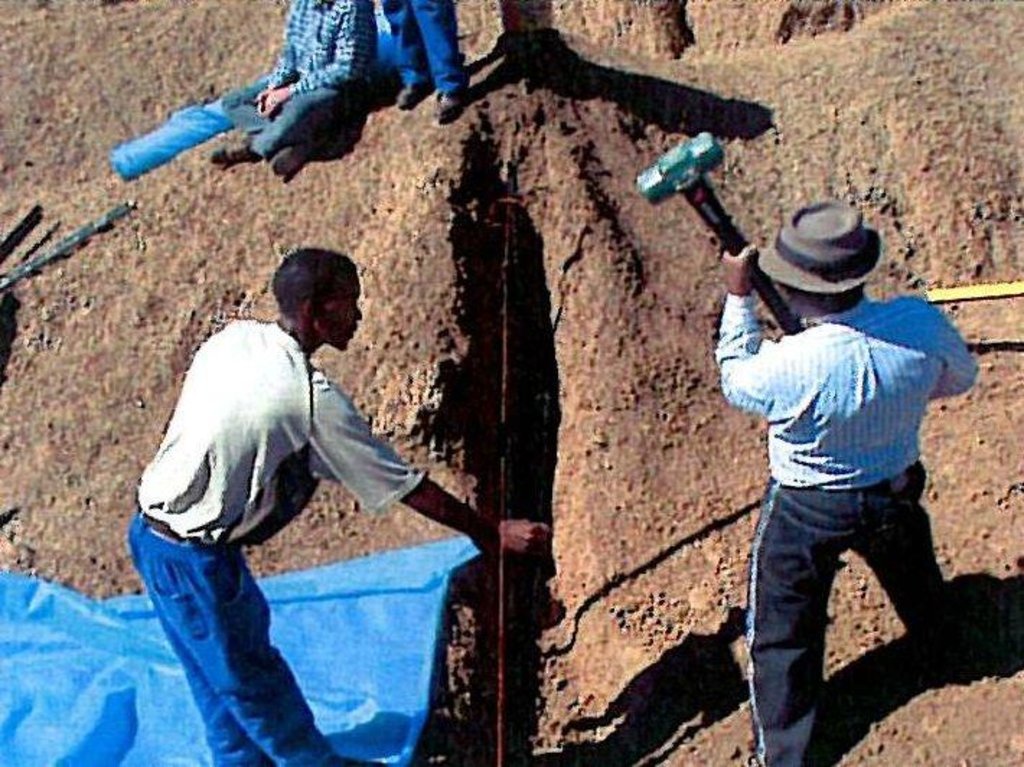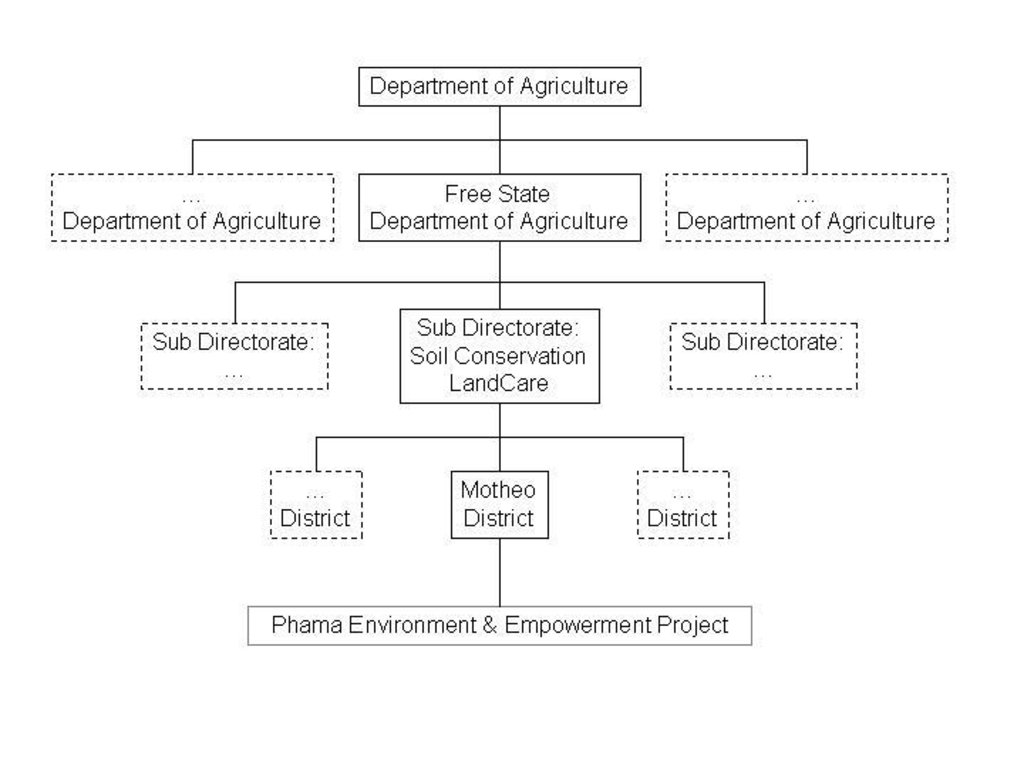Alternative and cost effective methods to control soil erosion [ЮАР]
- Создание:
- Обновить:
- Составитель: Christiann Smith
- Редактор: –
- Рецензент: Fabian Ottiger
approaches_2654 - ЮАР
Просмотреть разделы
Развернуть все Свернуть все1. Общая информация
1.2 Контактные данные специалистов и организаций, участвующих в описании и оценке Подхода
1.3 Условия, регламентирующие использование собранных ВОКАТ данных
Составитель и ответственный/-ые специалист(-ы) согласны с условиями, регламентирующими использование собранных ВОКАТ данных:
Да
2. Описание Подхода УЗП
2.1 Краткое описание Подхода
Alternative and cost effective methods to control soil erosion
2.2 Подробное описание Подхода
Подробное описание Подхода:
Aims / objectives: Research alternative, cost effective measures to control soil erosion Training of potentail contractor to errect soil conservation structures (Black Economic Empowerment) Wider acceptance and adoption of techniques by neighbouring communities
Methods: On-site research Literature research Needs analysis Trial and error Awareness ampaigns and information days Job creation to build structures
Stages of implementation: Control invader plants Literature research Design small structures Construction of erosion structures and stock watering Research on run-off trials Data analysis Information sharing
Role of stakeholders: Construction of small structures, controll invader plans, construction of stock watering
2.3 Фотографии, иллюстрирующие Подход
2.5 Страна/ регион/ место, где применялся Подход
Страна:
ЮАР
Административная единица (Район/Область):
South Africa / Free State
Более точная привязка места:
Ladybrandt
2.6 Даты начала и окончания реализации Подхода
Год начала реализации:
2006
Год окончания (Если Подход больше не применяется):
2009
2.7 Тип Подхода
- в рамках проекта/ программы
2.8 Каковы цели/ задачи Подхода
The Approach focused mainly on SLM with other activities (Control invader and alien plants)
Research alternative, cost effective measures to control soil erosion Training of potentail contractor to errect soil conservation structures (Black Economic Empowerment) Wider acceptance and adoption of techniques by neighbouring communities
The SLM Approach addressed the following problems: Soil erosion Lost of grazing due to invader and alien plants Over grazing Lack of stock / grazing management Lack of knowledge
2.9 Условия содействующие применению Технологии/ Технологий в рамках Подхода или затрудняющие его
Наличие/ доступность финансовых ресурсов и услуг
- затрудняют
Community has limited financial resource for conservation
Treatment through the SLM Approach: Project will provide funding for implementation of structures
Нормативно-правовая база (землевладение, права на земле- и водопользование)
- затрудняют
The existing land ownership, land use rights / water rights moderately hindered the approach implementation Stock owners association rules was too rigid and land users are not owners (communage) - no private ownership. Members of cattle association differ.
Осведомленность в области УЗП, доступность технической поддержки
- затрудняют
Community does not have technical know-how to design small structures
Treatment through the SLM Approach: Project provides technical inpust
другие
- затрудняют
Knowledge: Little knowledge about cost-effective measures to control soil erosion
Treatment through the SLM Approach: Project will provide funding for implementation of structures
3. Участие и распределение ролей заинтересованных сторон
3.1 Заинтересованные стороны, участвующие в реализации Подхода и их роли
- местные землепользователи/ местные сообщества
Stock owners, contractors and community members
Men will do more physical work like building rock structures or fitting of rock gabions
- эксперты по УЗП/ сельскому хозяйству
- государственные власти (отвечающие за планирование или принятие решений)
Provincial Department of Agriculture technical officials
- международные организации
3.2 Участие местных землепользователей/ местных сообществ на разных стадиях реализации Подхода
| Участие местных землепользователей/ местных сообществ | Перечислите участников и опишите их вовлеченность | |
|---|---|---|
| инициирование/ мотивация | пассивное | |
| планирование | пассивное | |
| выполнение | внешняя поддержка | |
| мониторинг/ оценка | интерактивное | |
| Research | нет |
3.3 Схема реализации (если имеется)
3.4 Принятие решений по выбору Технологии/ Технологий УЗП
Укажите, кто принимал решение по выбору применяемой Технологии/ Технологий:
- преимущественно специалисты по УЗП после консультаций с землепользователями
Поясните:
Decisions on the method of implementing the SLM Technology were made by mainly by SLM specialists with consultation of land users
4. Техническая поддержка, повышение компетенций и управление знаниями
4.1 Повышение компетенций/ обучение
Проводилось ли обучение землепользователей/ других заинтересованных лиц?
Да
- land user
Тип обучения:
- опытные участки
- общие собрания
- курсы
Рассматриваемые темы:
Construction of SWC structures and training on veld management. Control of invader plants.
4.2 Консультационные услуги
Есть ли у землепользователей возможность получать консультации?
Да
Укажите, где именно оказываются консультационные услуги:
- на полях землепользователей
Описание/ комментарий:
Name of method used for advisory service: Cost effective erosion control and veld management; Key elements: Awareness, Meetings formal and informal, Farm visits and participatory approaches
Advisory service is quite adequate to ensure the continuation of land conservation activities; Empowered through project to continue with SWC activities
4.4 Мониторинг и оценка
Являются ли мониторинг и оценка частью Подхода?
Да
Комментарии:
technical aspects were regular monitored through measurements; indicators: Functionaing (effectiveness) of structures
socio-cultural aspects were ad hoc monitored through observations; indicators: Adoption of technology
area treated aspects were regular monitored through measurements; indicators: Area treatede / conserved
no. of land users involved aspects were regular monitored through measurements; indicators: No. of community actively involved
management of Approach aspects were regular monitored through measurements; indicators: Maintenance and acceptance
There were few changes in the Approach as a result of monitoring and evaluation: Redesign of small structures and different application of materials
4.5 Научные исследования
Были ли научные исследования частью Подхода?
Да
Укажите темы исследований:
- экология
Напишите подробнее и назовите тех, кто выполнял исследования:
Run-off trials and participatory approaches for community participation
Research was carried out on-farm
5. Финансирование и внешняя материальная поддержка
5.1 Годовой бюджет мероприятий по УЗП в рамках Подхода
Если точный годовой бюжет неизвестен, укажите примерный диапазон затрат:
- 100 000-1 000 000
Комментарий (например, основные источники финансирования/ ключевые доноры):
Approach costs were met by the following donors: government (Agricultural Research Council): 80.0%; national non-government: 15.0%; local community / land user(s): 5.0%
5.2 Финансирование и внешняя материальная поддержка, предоставляемая землепользователям
Предоставлялась ли землепользователям финансовая/ материальная поддержка для применения Технологии /Технологий?
Да
5.3 Субсидии на отдельные затраты (включая оплату труда)
- оборудование
| Укажите, какие ресурсы были субсидированы | В какой степени | Опишите субсидии подробнее |
|---|---|---|
| техника | профинансированы частично | |
| инвентарь/ инструменты | профинансированы частично | |
- сельскохозяйственные
| Укажите, какие ресурсы были субсидированы | В какой степени | Опишите субсидии подробнее |
|---|---|---|
| семена | профинансированы полностью | |
| удобрения | профинансированы полностью | |
| Biocides | профинансированы полностью | |
Если труд землепользователя был существенным вкладом, укажите, был ли этот вклад:
- за денежное вознаграждение
Комментарии:
Grant paid for labour
Material for SWC structures were fully financed
5.4 Кредитование
Предоставлялись ли в рамках Подхода кредиты на мероприятия УЗП?
Нет
6. Анализ влияния и заключительные положения
6.1 Влияние Подхода
Сумел ли Подход помочь землепользователям внедрить и поддерживать технологии УЗП?
- Нет
- Да, немного
- Да, умеренно
- Да, существенно
Use of silt fences and soil boxes adapted by land users
Сумел ли Подход разрешить правовые проблемы землевладения/ землепользования, препятствующие использованию технологий УЗП?
- Нет
- Да, немного
- Да, умеренно
- Да, существенно
Improve general awareness and commitment of cattle owners The problem is unlikely to be overcome in the near future. Too many people - too much pressure on the land and unwillingness of local authorities to get involved.
Did other land users / projects adopt the Approach?
- Нет
- Да, немного
- Да, умеренно
- Да, существенно
Commercial farmers who visited project adopted and implemented some of the SWC methods deomnstrated / researched in projects.
6.4 Сильные стороны/ преимущества Подхода
| Сильные стороны/ преимущества/ возможности по мнению землепользователей |
|---|
| Temporary job creation (How to sustain/ enhance this strength: Not sustainable if there are no follow up projects) |
| Improved natural resource condition (How to sustain/ enhance this strength: Maintain structures / control invasive plants / implement grazing system) |
| Contractor empowered with unique SWC methods - niche market (How to sustain/ enhance this strength: Continue empowerment with training and informatin sharing. He has to advertise his services.) |
| Сильные стороны/ преимущества/ возможности по мнению составителя или других ключевых специалистов |
|---|
| Empowerment of community with knowledge and skills (How to sustain/ enhance this strength: Ensure the adaption and implementation of structures and maintenance of current structures) |
| Empowerment of contractor (How to sustain/ enhance this strength: Follow up projects and work for private sector) |
| Holistic approach towards environmental problems (How to sustain/ enhance this strength: systems approach deal with real causes of degradation. More partnerships and more stakholders involved.) |
| Cost effective methods to control soil conservation (How to sustain/ enhance this strength: More on-site research andawareness of test method technologies and approaches.) |
| Alien plant control (How to sustain/ enhance this strength: Follow up and more research monitoring and evaluation) |
| Improved veld management (How to sustain/ enhance this strength: Monitoring and evaluation) |
6.5 Слабые стороны/ недостатки Подхода и пути их преодоления
| Слабые стороны/ недостатки/ риски по мнению землепользователей | Возможные пути их преодоления/снижения? |
|---|---|
| No ownership of land (land tennure - commonage) | Review use of commonages - need new policy |
| Low educational levels - difficalt to train, learn new technologies | Continue education, training and awareness |
| Contractor needs administrative empowerment | Capacity building |
| Слабые стороны/ недостатки/ риски по мнению составителя или ответственных специалистов | Возможные пути их преодоления/снижения? |
|---|---|
| Lack of local expertise in SWC structures / small structures | Continue with researh and information shareing at national / international level. |
| Capacity on project management side | More and better trained project managers. |
| Financial support: Huge problem - small budget | Convince national donors about extent and degree of degradation problems. Look for private donors. |
| Politics exclude commercial farmers - project coud have bigger impact | Decision for restoration and conservation must be based on ecological needs and not political agendas. |
7. Справочные материалы и ссылки
7.1 Методы сбора/источники информации
- выезды на места, полевые обследования
- опросы землепользователей
Ссылки и модули
Развернуть все Свернуть всеСсылки
Нет ссылок
Модули
Нет модулей






